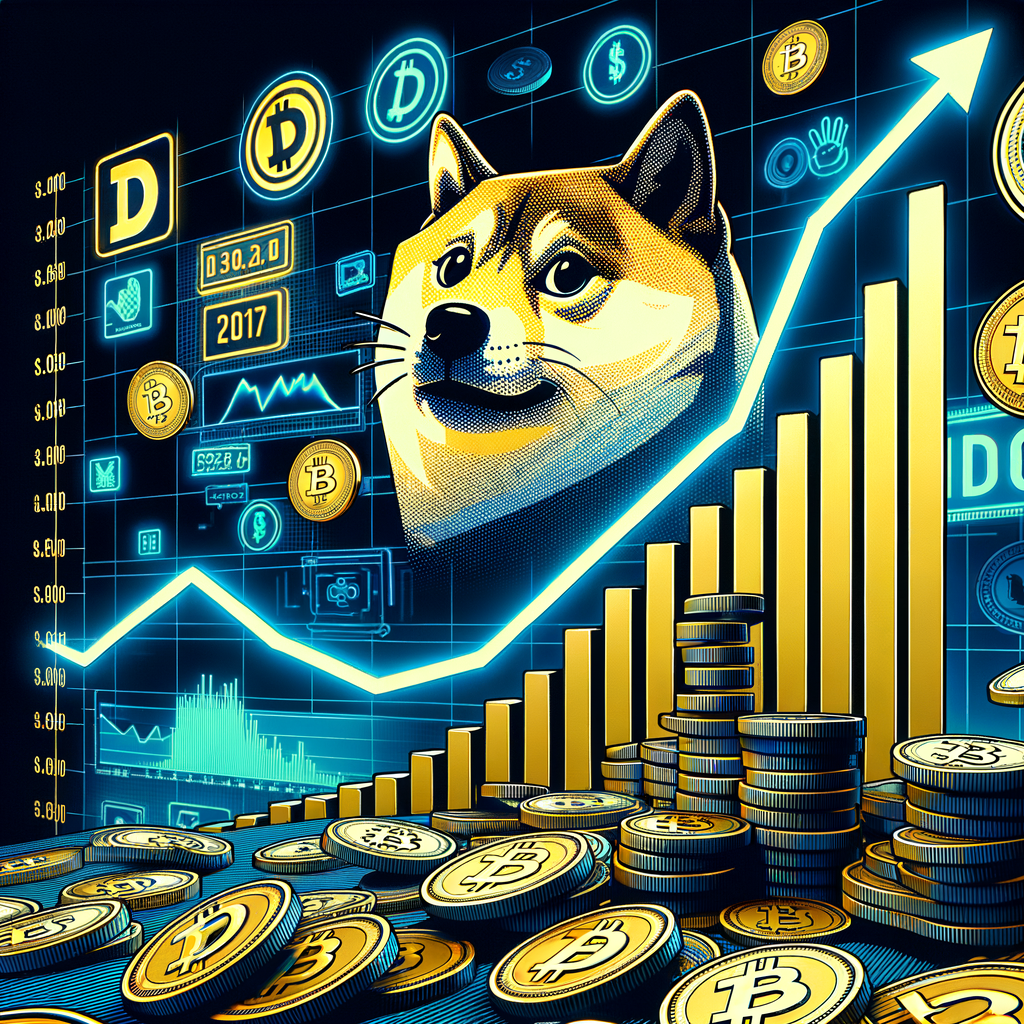Analyzing Dogecoin’s Profit Trends: The Impact of Emerging Memecoins
Dogecoin’s Annual Profits Decline Amid Rising Popularity of Competing Memecoins
In the ever-evolving landscape of cryptocurrency, Dogecoin has long stood out as a pioneer among memecoins—a category of digital currencies that originated from internet memes or have humorous characteristics. However, despite its increasing popularity and the cult-like status it enjoys among its fervent community, Dogecoin has seen a noticeable decline in its annual profits. This trend has raised eyebrows and prompted discussions about the sustainability of its growth in the face of burgeoning competition from a slew of emerging memecoins.
Initially created as a joke in 2013, Dogecoin quickly gained traction for its lighthearted approach and the strong camaraderie among its supporters. Its mascot, the Shiba Inu dog, became an iconic symbol of the playful spirit of the crypto community. Yet, as the market for cryptocurrencies expanded, Dogecoin’s novelty began to face challenges from new entrants that sought to capitalize on the memecoin phenomenon.
The proliferation of these new memecoins has been nothing short of remarkable. Each one arrives with its unique branding, often backed by vibrant marketing campaigns and promises of innovative features that aim to differentiate them from the pack. These fresh faces in the memecoin market have not only captured the imagination of investors but have also siphoned off some of Dogecoin’s market share, contributing to its profit downturn.
Despite this, the outlook for Dogecoin remains optimistic. The community behind it is known for its resilience and adaptability. Dogecoin enthusiasts continue to rally around the coin, using social media and other platforms to promote it and engage with potential new users. Moreover, the coin has received high-profile endorsements from influential figures, including tech mogul Elon Musk, which have periodically boosted its visibility and appeal.
Furthermore, Dogecoin’s decline in profits does not necessarily spell doom for the cryptocurrency. The digital currency market is notoriously volatile, and fluctuations in value are to be expected. In fact, these shifts can serve as a catalyst for innovation within the Dogecoin ecosystem. Developers and community leaders are incentivized to explore new use cases, partnerships, and technological advancements that could enhance the coin’s utility and, by extension, its profitability.
Additionally, the broader acceptance of cryptocurrencies as a legitimate asset class has led to increased interest from both retail and institutional investors. As the market matures, Dogecoin could benefit from this growing legitimacy, attracting investors who are looking for established names with a proven track record. This could help stabilize its profit margins and ensure its longevity in the competitive memecoin arena.
In conclusion, while Dogecoin’s annual profits may have taken a hit due to the rise of competing memecoins, the digital currency’s future remains bright. Its enduring popularity, coupled with a dedicated community and the potential for further development, positions Dogecoin to navigate the challenges ahead. As the crypto market continues to expand and diversify, Dogecoin’s journey serves as a testament to the dynamic and unpredictable nature of this digital frontier. With an optimistic outlook, supporters of the Shiba Inu-themed coin watch with anticipation, ready to embrace the next chapter in Dogecoin’s remarkable story.
Dogecoin’s Earnings Dilemma: Balancing Popularity with Profitability in the Memecoin Market
Dogecoin’s Earnings Dilemma: Balancing Popularity with Profitability in the Memecoin Market
In the ever-evolving landscape of cryptocurrency, Dogecoin has emerged as a household name, capturing the hearts of investors and internet enthusiasts alike with its Shiba Inu mascot and lighthearted origin. However, despite its rising popularity and the cult-like following it has amassed, Dogecoin’s annual profits have seen a decline. This downturn comes as a wave of new competing memecoins flood the market, each vying for a piece of the digital currency pie.
Initially created as a joke in 2013, Dogecoin quickly transcended its meme status to become a legitimate investment opportunity. Its community-driven approach and charitable endeavors have fostered a loyal base of supporters. Yet, the very factors that propelled Dogecoin to stardom are now presenting challenges in maintaining profitability. As the market becomes saturated with similar offerings, investors are faced with a plethora of choices, diluting the impact of Dogecoin’s once-unique appeal.
The proliferation of memecoins is a testament to the power of internet culture in shaping the financial sector. These new entrants are capitalizing on the latest trends and memes, creating a dynamic and competitive environment. While Dogecoin continues to enjoy widespread recognition, the novelty of emerging coins is attracting investors who are looking for the next big hit, leading to a fragmentation of the memecoin market share.
Despite these challenges, Dogecoin’s community remains optimistic about its future. The coin’s developers and advocates are working tirelessly to innovate and adapt to the changing landscape. Efforts to improve transaction efficiency, bolster security, and expand use cases are underway, aiming to enhance Dogecoin’s value proposition beyond its meme origins. Moreover, high-profile endorsements from influential figures like Elon Musk have provided intermittent boosts to Dogecoin’s visibility and credibility.
Furthermore, the memecoin phenomenon has sparked a broader conversation about the role of humor and culture in finance. Dogecoin’s journey from a playful experiment to a top cryptocurrency contender has inspired a new generation of investors to engage with the market in unconventional ways. This intersection of finance and fun has democratized investment opportunities, inviting a diverse array of participants to explore the potential of cryptocurrencies.
As Dogecoin navigates the complexities of a maturing market, it faces the task of redefining its identity. The coin’s creators and community are exploring strategies to differentiate Dogecoin from the pack, emphasizing its pioneering role in the memecoin space and reinforcing its established brand. By leveraging its early mover advantage and deep-rooted community support, Dogecoin aims to recapture market attention and reignite its growth trajectory.
In conclusion, while Dogecoin’s annual profits may have declined in the face of stiff competition from a growing number of memecoins, the optimism surrounding its future is palpable. The coin’s adaptability, coupled with a dedicated community and ongoing development efforts, positions it well to overcome the earnings dilemma it currently faces. As the memecoin market continues to expand, Dogecoin’s journey serves as a reminder that in the world of cryptocurrency, innovation, community, and a touch of humor can go a long way in balancing popularity with profitability.







